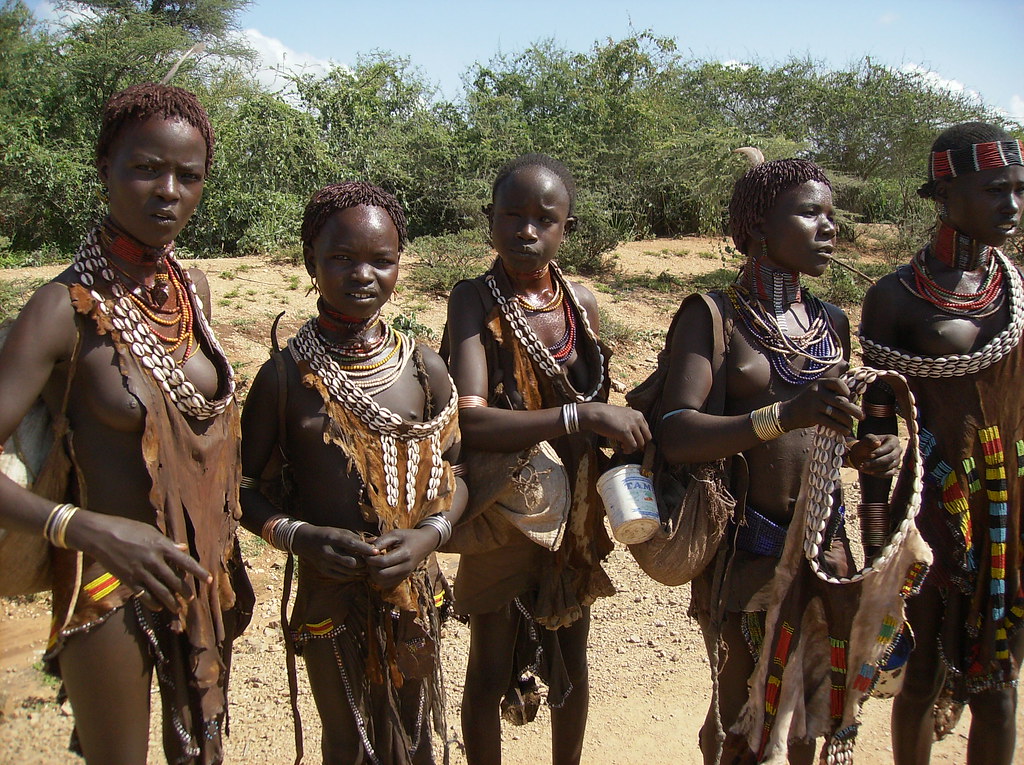About Ethiopia (The Country)
Unique among African countries, the ancient Ethiopian monarchy maintained its freedom from colonial rule with the exception of a short-lived Italian occupation from 1936-41. In 1974, a military junta, the Derg, deposed Emperor Haile SELASSIE (who had ruled since 1930) and established a socialist state. Torn by bloody coups, uprisings, wide-scale drought, and massive refugee problems, the regime was finally toppled in 1991 by a coalition of rebel forces, the Ethiopian People's Revolutionary Democratic Front (EPRDF). A constitution was adopted in 1994, and Ethiopia's first multiparty elections were held in 1995. A border war with Eritrea late in the 1990s ended with a peace treaty in December 2000. In November 2007, the Eritrea-Ethiopia Border Commission (EEBC) issued specific coordinates as virtually demarcating the border and pronounced its work finished. Alleging that the EEBC acted beyond its mandate in issuing the coordinates, Ethiopia has not accepted them and has not withdrawn troops from previously contested areas pronounced by the EEBC as belonging to Eritrea. In August 2012, longtime leader Prime Minister MELES Zenawi died in office and was replaced by his Deputy Prime Minister HAILEMARIAM Desalegn, marking the first peaceful transition of power in decades.
Contents
Geography
Geographic coordinates
8 00 N, 38 00 E
Climate
Tropical monsoon with wide topographic-induced variation.
Terrain
High plateau with central mountain range divided by Great Rift Valley.
Natural Resources
Small reserves of gold, platinum, copper, potash, natural gas, hydropower
Environment - Current Issues
Deforestation; overgrazing; soil erosion; desertification; water shortages in some areas from water-intensive farming and poor management.
People
Population
96,633,458 Country comparison to the world: 14 Note: estimates for this country explicitly take into account the effects of excess mortality due to AIDS; this can result in lower life expectancy, higher infant mortality, higher death rates, lower population growth rates, and changes in the distribution of population by age and sex than would otherwise be expected (July 2014 est.)
Age Structure
0-14 years: 44.2% (male 21,376,243/female 21,308,454)
15-24 years: 19.9% (male 9,557,462/female 9,692,275)
25-54 years: 29.2% (male 14,023,218/female 14,176,263)
55-64 years: 3.9% (male 1,826,602/female 1,919,212)
65 years and over: 2.8% (male 1,242,171/female 1,511,558) (2014 est.)
Median Age
Total: 17.6 years
Male: 17.4 years
Female: 17.7 years (2014 est.)
Population Growth
2.89% (2014 est.)
Country comparison to the world: 14
Urbanization
Urban population: 17% of total population (2011)
Rate of urbanization: 3.57% annual rate of change (2010-15 est)
ADDIS ABABA (capital) 2.979 million (2011)
Sex Ratio
At birth: 1.03 male(s)/female
0-14 years: 1 male(s)/female
15-24 years: 0.99 male(s)/female
25-54 years: 0.99 male(s)/female
55-64 years: 0.99 male(s)/female
65 years and over: 0.83 male(s)/female
Total population: 0.99 male(s)/female (2014 est.)
Infant Mortality Rate
Total: 55.77 deaths/1,000 live births
Country comparison to the world: 29
Male: 63.77 deaths/1,000 live births
Female: 47.53 deaths/1,000 live births (2014 est.)
Life Expectancy at Birth
Total population: 60.75 years
Country comparison to the world: 193
Male: 58.43 years
Female: 63.15 years (2014 est.)
HIV/AIDS
1.3% (2012 est.)
Country comparison to the world: 34
Nationality
Noun: Ethiopian(s)
Adjective: Ethiopian
Oromo 34.4%, Amhara (Amara) 27%, Somali (Somalie) 6.2%, Tigray (Tigrinya) 6.1%, Sidama 4%, Gurage 2.5%, Welaita 2.3%, Hadiya 1.7%, Afar (Affar) 1.7%, Gamo 1.5%, Gedeo 1.3%, Silte 1.3%, Kefficho 1.2%, other 10.5% (2007 est.).
Religion
Ethiopian Orthodox 43.5%, Muslim 33.9%, Protestant 18.5%, traditional 2.7%, Catholic 0.7%, other 0.6% (2007 est.).
Languages
Oromo (official working language in the State of Oromiya) 33.8%, Amharic (official national language) 29.3%, Somali (official working language of the State of Sumale) 6.2%, Tigrigna (Tigrinya) (official working language of the State of Tigray) 5.9%, Sidamo 4%, Wolaytta 2.2%, Gurage 2%, Afar (official working language of the State of Afar) 1.7%, Hadiyya 1.7%, Gamo 1.5%, Gedeo 1.3%, Opuuo 1.2%, Kafa 1.1%, other 8.1%, English (major foreign language taught in schools), Arabic (2007 est.)
Literacy
Definition: Age 15 and over can read and write
Total population: 39%
Male: 49.1%
Female: 28.9% (2007 est.)
Government
Country name
Conventional long form: Federal Democratic Republic of Ethiopia
Conventional short form: Ethiopia
Local long form: Ityop'iya Federalawi Demokrasiyawi Ripeblik
Local short form: Ityop'iya
Former: Abyssinia, Italian East Africa
Abbreviation: FDRE
Capital
Addis Ababa
Time Difference
UTC+3 (8 hours ahead of Washington, DC, during Standard Time).
Legal system
Civil law system
Economy
Ethiopia's economy is based on agriculture but the government is pushing to diversify into manufacturing, textiles, and energy generation.. Coffee is a major export crop. The agricultural sector suffers from poor cultivation practices and frequent drought, but recent joint efforts by the Government of Ethiopia and donors have strengthened Ethiopia's agricultural resilience, contributing to a reduction in the number of Ethiopians threatened with starvation. The banking, insurance, telecommunications, and micro-credit industries are restricted to domestic investors, but Ethiopia has attracted significant foreign investment in textiles, leather, commercial agriculture and manufacturing. Under Ethiopia's constitution, the state owns all land and provides long-term leases to the tenants; land use certificates are now being issued in some areas so that tenants have more recognizable rights to continued occupancy and hence make more concerted efforts to improve their leaseholds. While GDP growth has remained high, per capita income is among the lowest in the world. Ethiopia's economy continues on its state-led Growth and Transformation Plan under the new collective leadership that followed Prime Minister MELES’s death.
Source
Source: www.cia.gov/library/publications/the-world-factbook/geos/et.html CIA World Factbook - Ethiopia
Back to Adopting from Ethiopia
